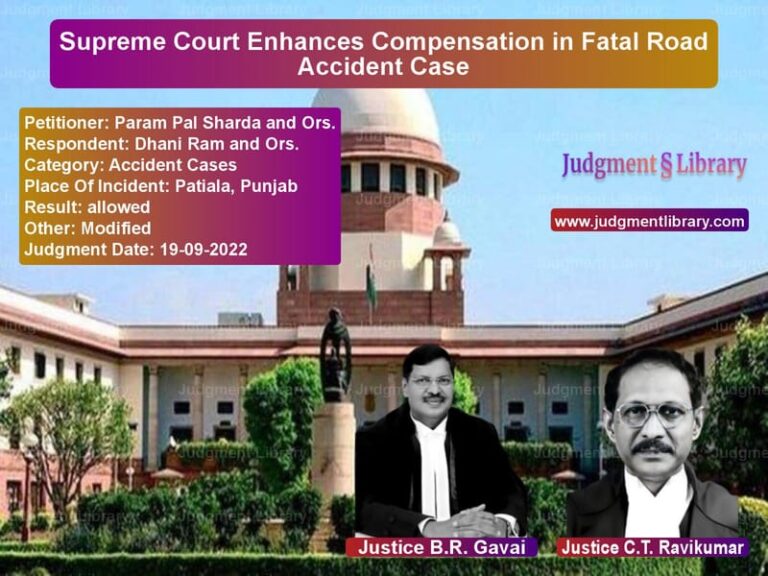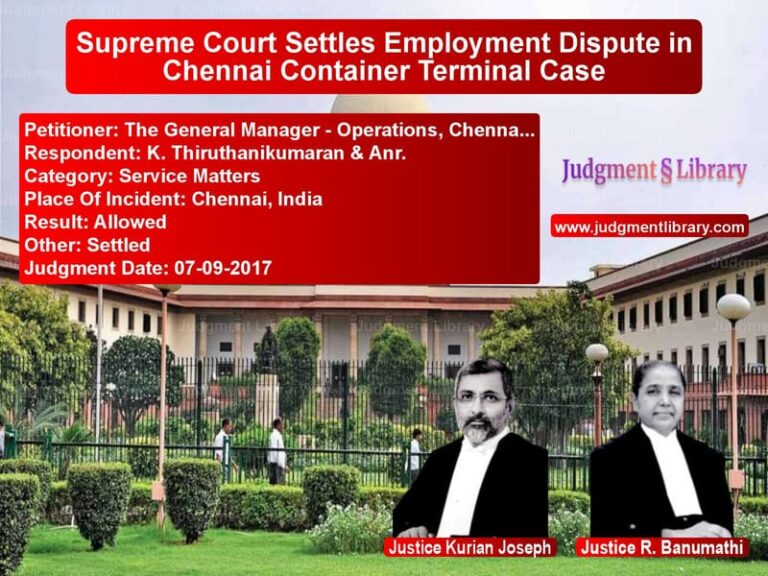Equal Pay for Equal Work: Supreme Court Upholds Parity for Ordnance Factory Employees
The case of Union of India & Ors. vs. D.G.O.F. Employees Association and Anr. is a significant judgment concerning pay parity among government employees. The Supreme Court upheld the decision to grant equal pay scales to employees of the Ordnance Factory Board (OFB) headquarters, aligning them with similarly placed employees in the Central Secretariat Service (CSS) and other equivalent cadres.
Background of the Case
The dispute arose when employees of the Ordnance Factory Board headquarters sought parity in pay scales with counterparts in the CSS, Armed Forces Headquarters Civil Service (AFHCS), and other similar government organizations. Historically, OFB employees had received the same pay as their CSS counterparts. However, after the implementation of the Sixth Central Pay Commission (CPC), their pay scales were not upgraded in line with other departments.
The Delhi High Court ruled in favor of the OFB employees, directing the government to restore pay parity. The Union of India challenged this decision in the Supreme Court, arguing that judicial intervention in pay fixation matters was limited and that the Sixth CPC recommendations did not explicitly cover OFB employees.
Petitioner’s Arguments
The Union of India, representing the government, contended:
- The power of judicial review in pay-related matters is limited, and courts should not interfere unless there is clear arbitrariness.
- The Sixth CPC had proposed pay scale replacements but did not explicitly include OFB employees.
- Employees in different government departments cannot automatically claim equal pay, as duties and responsibilities vary.
- The government had discretion to determine pay scales based on job evaluations, and the courts should not override such decisions.
Respondent’s Arguments
The D.G.O.F. Employees Association, representing the employees, countered:
- OFB employees had historically received the same pay scales as CSS and AFHCS employees.
- The Sixth CPC emphasized maintaining parity across similarly placed posts.
- The denial of pay parity was an arbitrary action by the government, which disrupted longstanding uniformity in pay structures.
- The government selectively applied the CPC recommendations, upgrading other services but excluding OFB employees without justification.
Key Legal Issues Considered
1. Judicial Review in Pay Fixation
The Court examined whether it had the authority to intervene in pay matters. While courts typically defer to expert bodies like pay commissions, they can intervene if pay fixation is arbitrary, discriminatory, or violates constitutional principles.
2. Application of Sixth CPC Recommendations
The Sixth CPC recommended parity between Secretariat and non-Secretariat organizations. The Court assessed whether OFB employees, as headquarters staff, qualified for the same pay scale as CSS and AFHCS employees.
3. Historical Pay Parity
The Court considered whether OFB employees had a precedent of equal pay with CSS employees. Since parity existed under previous pay commissions, the Court evaluated whether its discontinuation was justified.
Supreme Court’s Verdict
The Supreme Court ruled in favor of the OFB employees, affirming the High Court’s judgment. The key findings included:
- The Sixth CPC’s paragraph 3.1.9 recommended parity among Secretariat and similar services, covering OFB employees.
- There was no valid reason for the government to break the established parity between OFB and CSS employees.
- The government’s argument that OFB employees were not explicitly mentioned in CPC recommendations was unpersuasive and speculative.
- The Court rejected the reliance on paragraph 3.1.14, which applied to field offices, as OFB employees worked in headquarters roles.
- Judicial intervention was justified since the denial of parity was arbitrary and violated the principle of equal pay for equal work.
Key Takeaways from the Judgment
- Pay parity must be maintained: The government cannot arbitrarily deny equal pay to historically comparable posts.
- Court intervention in pay disputes: While courts usually defer to expert bodies, they can act if pay disparity is arbitrary.
- Headquarters vs. field offices: Employees performing similar functions in different departments deserve the same pay.
- Importance of historical pay structures: If pay parity existed under previous CPCs, the government must provide strong reasons for discontinuation.
This judgment strengthens protections against arbitrary pay disparities and reinforces the principle of equal pay for equal work within government service.
Petitioner Name: Union of India & Ors..Respondent Name: D.G.O.F. Employees Association and Anr..Judgment By: Justice A.S. Bopanna, Justice Pamidighantam Sri Narasimha.Place Of Incident: India.Judgment Date: 09-11-2023.
Don’t miss out on the full details! Download the complete judgment in PDF format below and gain valuable insights instantly!
Download Judgment: union-of-india-&-ors-vs-d.g.o.f.-employees-a-supreme-court-of-india-judgment-dated-09-11-2023.pdf
Directly Download Judgment: Directly download this Judgment
See all petitions in Employment Disputes
See all petitions in Public Sector Employees
See all petitions in Judgment by A. S. Bopanna
See all petitions in Judgment by P.S. Narasimha
See all petitions in dismissed
See all petitions in supreme court of India judgments November 2023
See all petitions in 2023 judgments
See all posts in Service Matters Category
See all allowed petitions in Service Matters Category
See all Dismissed petitions in Service Matters Category
See all partially allowed petitions in Service Matters Category







